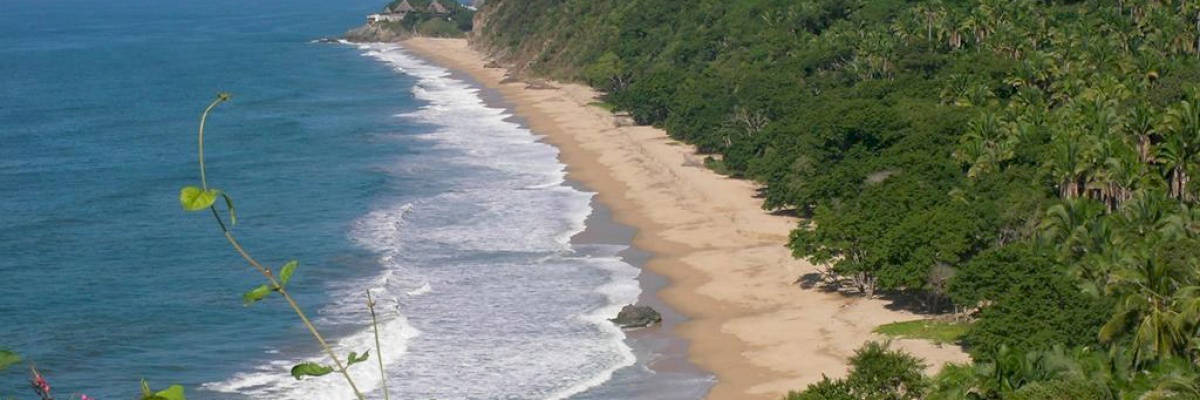World Journey Part 2
Canada | U.S. | Mexico | Peru
Tijuana is 1.5 hours away by trolley and you will definitely notice the changes in scenery and people mass once you get there.
From the U.S you just strove across into Mexico without being checked, but if you are coming from the other side, now that is something else.
I don’t think that there is a big difference between Tijuana and other border towns that contain the same amount of cultural offbeat.
There is always going to be a lot of tension in places like this, but if you like liquor, drugs and prostitutes, and want it cheap, then Tijuana is worth a visit.
Mexico is not as poor as you might think; only in terms of comparison with the U.S.
Being so close to a very rich country makes its infrastructure look really bad. 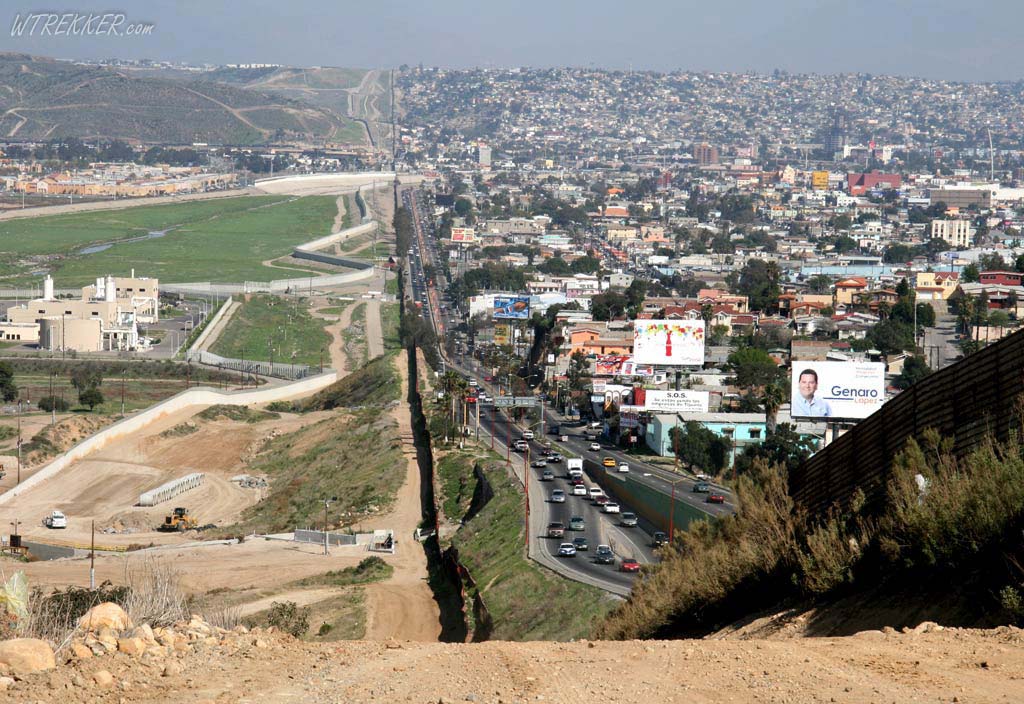
Daniel, Johan and I immediately grabbed a bus from Tijuana to Esperance where Daniels girlfriend, Carla, lives.
A few hours later she picked us up at the station and drove us around her town, before dropping us off at a hotel.
Esperance is in Baja California, the Peninsular that hangs off the side of the U.S West Coast. If you want to experience the “REAL” Mexico then stay away from the Baja and go down the mainland.
This is where the beauty of this massive land lies. I did not like Esperance as the city itself and you are just another Gringo here. I liked the hospitality of Carla and friends, and not to forget the Mexican breakfast, (hot) prepared for us with one hell of a Tequila hangover, hahaha, thanks, Carla.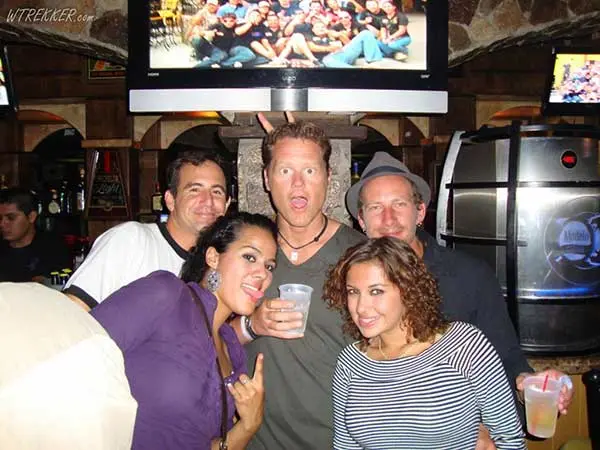
After the weekend, Daniel and Johan vent back to the U.S, and I continued all the way down to La. Paz, A 20-hour bus ride.
The only thing on my mind was getting to the mainland and down to Sayulita (Puerto Vallarta) as quickly as I could.
I had to stay in La Paz for two days as the ferry only left on certain weekdays. Two days later at the bus station, I missed my bus to the ferry.
I had once again not given any thought to the time zone changes so I was one hour behind everyone else’s schedule, including the buses. As I was waiting for the next bus I bump into Juan, from Spain.
He was also going on the ferry, so we decided to join trails as far as Mazatlan.
La Paz had started to close everything down because of a hurricane arriving, but luckily enough we manage to get on the first and probably the last ferry, before being stranded for the duration of it. 
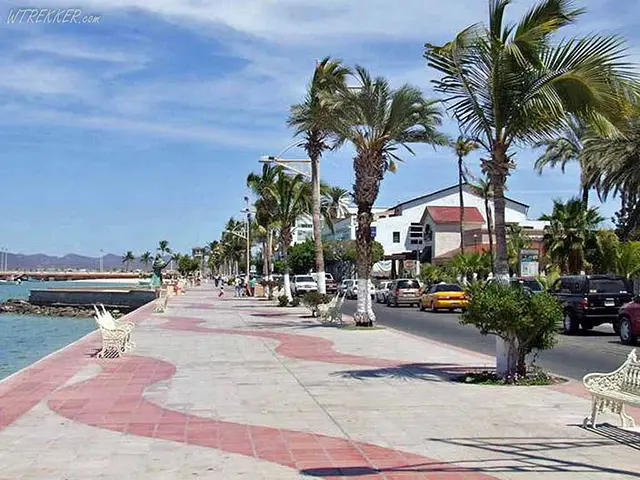
We crossed the sea of Cortez in nine hours, arriving at port Los Mochis. Juan had been chatting to some of the many truck drivers onboard and gotten us a ride down South to Mazatlan with Alexandro, who was a newly proud dad for the 3rd time.
The inside of his truck was decorated with pictures of all three of his children and with one of his wife, making his face light up every time he mentioned them.
Being a truck driver can get lonely when driving long distances without company, so Juan who was the Spanish speaking one had to stay awake for most of the night, talking and listening to Alexandro, who enjoyed the extra company for once.
I was comfortably lying in the back trying to get some sleep, but the old diesel engine of the truck made it almost impossible, and the only thing keeping Juan awake was Alexandro’s life story.
We arrived the next morning where we were dropped off outside of Mazatlan.
It was raining, the first sign of the hurricane we had left behind us in La Paz.
It had died into a tropic storm while passing over the sea, making it a small treat now.
We hung out in Mazatlan a few days before our ways parted.
I was still determent to reach Sayulita, a small village near Puerto Vallarta that Aaron had recommended to me, and Juan was making his way inland to find work.
While on the bus, it didn’t take long before I saw the big difference between travelling down the Peninsular or the main part of this Country.
In Baja you only see Desert and military checkpoints all the way down, here it was a colourful jungle with Mountains.
Late at night, I was finally in Puerto Vallarta, but as there was no bus for Sayulita until 4 am. I crashed at the bus station until then, trying to get some sleep.
I found a corner next to a shrine of the Virgin Mary, where Mexicans come to pray for a safe trip and receive their blessings before getting on a bus.
4 am I had again managed to forget about time zones. I hadn’t set my watch since La Paz, so at 3 am I was woken up by the same girl that had sold me the ticket.
She had remembered me because I was the only Gringo in the station, and was holding the bus for me.
To Sayulita it is a 1.5-hour drive, it was still dark when I was dropped off somewhere on the main road, which seemed to be in the middle of nowhere. I thought, okay Morten, you wanted the real Mexico so here you are, now what.
Well, there was only one road, other than the one I was standing on.
I walked for twenty minutes, passing small houses, looking for something that would tell me that I was in the right place.
As I walk along in the middle of the road, stray dogs are suddenly paying attention to me and starts a maniac bagging session while I pass them.
I cross a small bridge, finally seeing something that could resemble the plaza of a town. I notice a little sign with a light dangling from a pole that says Hostal and knocks on the door.
The guy that opens assures me that I am in the right place, Finally.
Sayulita a tiny village halfway the down main coast of Mexico. It was bigger and more popular than I first thought, but understandable enough, people that came here just stayed and some never left.
There is more beach than people can occupy, and if you really want your privacy then there are several secluded ones around the area. 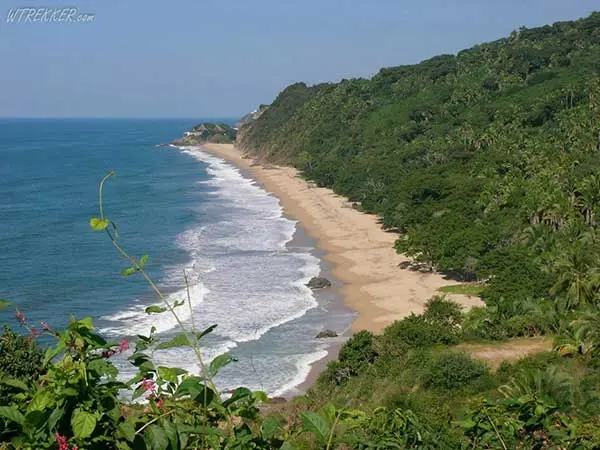
The days of drinking cold beer and eating big scrimps seemed endless as it was 45 degrees and 100% humidity. It made it very hard to do anything, not that there was much else. This is basically a great little spot to just do nothing and if you are a couple or more then there are plenty of nice houses along the beach for rent. I had mostly been on the road for 6 days to get here so I stayed for 10 days where most of them consisted of walking to the store for beer and the local fisherman for scrimp.
When the days felt too lazy I walked the 1.5 km to the end of the beach, there is a small trail on the right side, leading up through the jungle and to a viewpoint where you can see all of Sayulita and the secluded beaches on the other side.
If you can find the trail from the road, then you won’t have to crawl through the jungle to get to them and watch out for Leguanas because they like them too. After 10 days I was getting tired of beaches and needed a change of scenery, so instead of following the coast all the way to Central America, I flew to Lima – Peru.
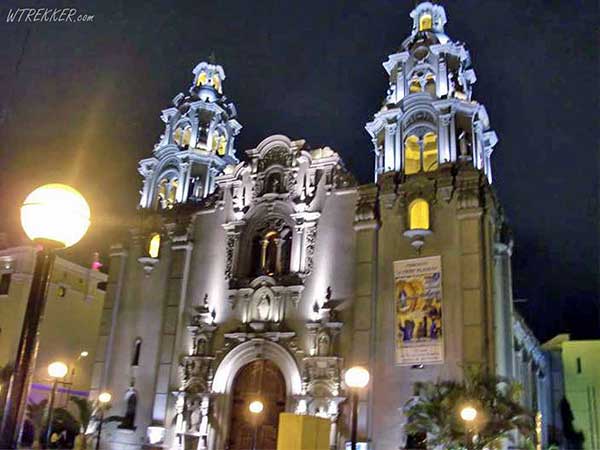
Mexico along with Peru is some of the biggest countries when it comes to their culture. Mexican history dates as far back as the Mayans, which began around 2600 B.C. in the Yucatan area, now known as the party city of Cancun.
It stretched down to Southern Mexico, Guatemala, El Salvador, and Honduras.
They are known for their extensive calendar systems, astronomy, hieroglyphic writing, and architecture of temple-pyramids.
Peru has the Incas that first began back in 1200 A.D. When they were at their biggest this Empire could be compared with the old Roman society, but it only lasted for about a century, from 1450 to 1530.
They dominated from Ecuador to the borders of Argentina and Chile, using Chasquis (runners) that carried messages from one end to another, along with a complex counting system, called Quipu to keep track of everything.
Among other things, Peru also holes a big part of the Amazon Jungle and River, which was my destination.
I did not want to spend too much time in Lima, a city with nine million, one 3rd the population of Peru. So my first stop was Tingo Maria, a village in the Mountains, twelve hours Nord-East. It is a place where the locals also come to when they need to get away from the big city. I stayed three km. outside of town at a resort called Villa Jennifer. Its owners, a Danish/Peruvian couple had made a Paradise out here, well worth a visit. Allan, the Danish guy had to rebuild it from being a farm to a farm-resort with exotic Animals around the area.
There is a Bat/Parrot Cave you can visit, two km. up on a dodgy road, and seven km. out of town, there is a National park where you can walk up to a small waterfall and go for a swim. 
You can easily do these things by yourself especially if you don’t understand Spanish then there is no reason to spend thirty soles on a guide.
One of the things that you a going to love about Peru is the Moto taxis. Small motorcycle, customized to transport three to four persons + luggage, and so cheap that it is very hard not to become lazy.
They are especially handy when you have no clue where “something” is.
I continued up North after four days in Tingo Maria, heading for the port town of Pucallpa. No matter if you take the bus or a collective (car if you are in a hurry) this can be a rough ride as it is on a mountain and the road is shit. You can do it in half the time with a collective, but I wouldn’t recommend it. There are no roads after you reach Pucallpa so the only way to get to the Jungle city of Iquitos is to either fly or take a boat up the Amazon River. I took a boat, Henry four. The company that are running these boats are strictly only concerned about their cargo, people come in second.
They never leave on time and the trip can take anywhere from three to six days.
You can get a cheap hammock and join the local Peruvians on the cargo deck. Just string your hammock up where ever you can.
This is about thirty $ for the whole trip incl. meals. Or you can spend sixty $ and get a private cabin which is small, basic, and extremely hot but at least you know that your luggage is safe, and it is less nosy. We stayed in port for two days, two days more then what we were toll, and you can’t really leave the boat to kill some time, because they will leave without you if you are not there. Our trip took in total six days, which is a long time on a boat in the Amazon but then again that is a part of the experience that you seek, otherwise you would have taken the plane instead. It gives everyone's curiosity a chance to evolve and makes the indigenous people, as well as the foreigners, interact, even though there is a language barrier to overcome. 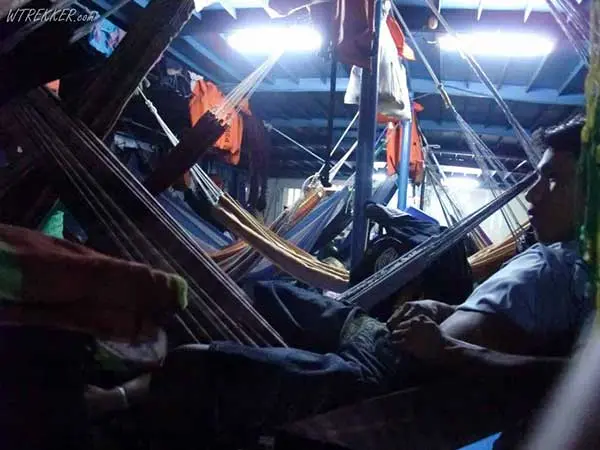
The last thing that I expected was to speak Danish on the boat, but then I met Mick and his family, who was I the cabin next to mine. He was Colombian born, but was adopted as a child, and grew up in Copenhagen. The same for his wife, except for that she was Peruvian. She had lived most of her life in Copenhagen, as well.
They had met there and later moved to Pucallpa, where they started a business, but the local gangs had forced them out because they didn’t want to pay protection money.
This is also where I first met Rambo, little Peruvian guy who used to be in the Special Forces but was now working on the Henry. Little did I know that I was to meet him later in Iquitos when I needed him the most. After enduring four days on the River, with only five hours to go, we stranded in the middle of the Amazon, hitting the bottom.
Several other boats passed us far out, afraid of getting to close and get stuck too. Only the ones that weren’t carrying any cargo was light enough to get into the shallow water and try to push us free, But since we weight fifty ton more than them, there was little chance of that happening. It took ten hours and three different boats before one of them got us free from the muddy bottom, and not long after, that same morning, we finally reached Iquitos.
TO BE CONTINUED...
→ World Journey → Part 3

